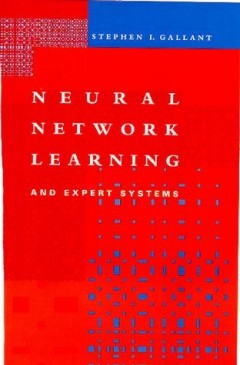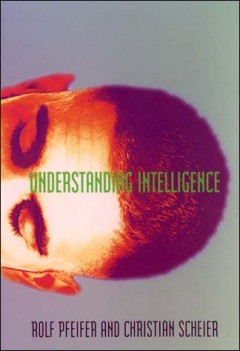Filter by

Neural network learning and expert systems
"Granino A. Kom has been a Professor of Electrical Engineering at the University of Arizona and has worked in the aerospace industry for a decade. He is the author of ten other engineering texts and handbooks.""A Bradford Book.""Most neural network programs for personal computers simply control a set of fixed, canned network-layer algorithms with pulldown menus. This new tutorial offers hands-o…
- Edition
- -
- ISBN/ISSN
- 0585040281
- Collation
- 1 online resource (xvi, 365 pages) :illustrations
- Series Title
- -
- Call Number
- -

Systems, Experts, and Computers: The Systems Approach in Management and Engin…
This study charts the origins and spread of the systems movement. It describes the major players - including RAND, MITRE, Ramo-Wooldrige (later TRW), and the International Institute of Applied Systems Analysis - and examines applications in a wide variety of military, government, civil, and engineering settings. The book is international in scope, describing the spread of systems thinking in Fr…
- Edition
- -
- ISBN/ISSN
- 9780262275873
- Collation
- 1 online resource (vi, 513 pages) :illustrations.
- Series Title
- -
- Call Number
- -

Understanding Intelligence
Researchers now agree that intelligence always manifests itself in behavior - thus it is behavior that we must understand. An exciting new field has grown around the study of behavior-based intelligence, also known as embodied cognitive science, "new AI," and "behavior-based AI."" "Rolf Pfeifer and Christian Scheier provide a systematic introduction to this new way of thinking about intelligenc…
- Edition
- -
- ISBN/ISSN
- 9780262256797
- Collation
- 1 online resource (xx, 697 pages) :illustrations
- Series Title
- -
- Call Number
- -

The AI business :the commercial uses of artificial intelligence
"What is the bottom line on Artificial Intelligence? The AI Business offers a comprehensive summary of the commercial picture, present and future, for Artificial Intelligence in the computer industry, medicine, the oil industry, and electronic design. AI's brightest and best -- financiers, researchers, and users -- analyze current projects, speculate on trends in factory automation, compare res…
- Edition
- -
- ISBN/ISSN
- 9780262257220
- Collation
- 1 online resource (324 pages) :illustrations
- Series Title
- -
- Call Number
- -

Participating in explanatory dialogues :interpreting and responding to questi…
While much has been written about the areas of text generation, text planning, discourse modeling, and user modeling, Johanna Moore's book is one of the first to tackle modeling the complex dynamics of explanatory dialogues. It describes an explanation-planning architecture that enables a computational system to participate in an interactive dialogue with its users, focusing on the knowledge st…
- Edition
- -
- ISBN/ISSN
- 9780262280136
- Collation
- 1 online resource (xiv, 352 pages) :illustrations.
- Series Title
- -
- Call Number
- -

Artificial experts :social knowledge and intelligent machines
In Artificial Experts, Collins explains what computers can't do, but he also studies the ordinary and extraordinary things that they can do. He argues that the machines we create are limited because we cannot reproduce in symbols what every community knows, yet we give our machines abilities by the way we embed them in our society. He unfolds a compelling account of the difference between human…
- Edition
- -
- ISBN/ISSN
- 0262255936
- Collation
- 1 online resource (xiii, 266 pages) :illustrations.
- Series Title
- -
- Call Number
- -

Embodying design :an applied science of radical embodied cognition
"This book sets the agenda for how we think about human activity that arises from embedding manipulated information in our action and embodied cognition"--OCLC-licensed vendor bibliographic record.
- Edition
- -
- ISBN/ISSN
- 0262369885
- Collation
- 1 online resource.
- Series Title
- -
- Call Number
- -

Knowledge in action :logical foundations for specifying and implementing dyna…
Modeling and implementing dynamical systems is a central problem in artificial intelligence, robotics, software agents, simulation, decision and control theory, and many other disciplines. In recent years, a new approach to representing such systems, grounded in mathematical logic, has been developed within the AI knowledge-representation community. This book presents a comprehensive treatment …
- Edition
- -
- ISBN/ISSN
- 9780262282314
- Collation
- 1 online resource (xvi, 424 pages) :illustrations
- Series Title
- -
- Call Number
- -

Knowledge engineering and management :the CommonKADS methodology
"A Bradford book."OCLC-licensed vendor bibliographic record.
- Edition
- -
- ISBN/ISSN
- 9780262283236
- Collation
- 1 online resource (xiv, 455 pages) :illustrations
- Series Title
- -
- Call Number
- -

Knowledge-based neurocomputing
Looking at ways to encode prior knowledge and to extract, refine, and revise knowledge within a neurocomputing system.Neurocomputing methods are loosely based on a model of the brain as a network of simple interconnected processing elements corresponding to neurons. These methods derive their power from the collective processing of artificial neurons, the chief advantage being that such systems…
- Edition
- -
- ISBN/ISSN
- 9780262270496
- Collation
- 1 online resource (xiv, 486 pages) :illustrations
- Series Title
- -
- Call Number
- -
 Computer Science, Information & General Works
Computer Science, Information & General Works  Philosophy & Psychology
Philosophy & Psychology  Religion
Religion  Social Sciences
Social Sciences  Language
Language  Pure Science
Pure Science  Applied Sciences
Applied Sciences  Art & Recreation
Art & Recreation  Literature
Literature  History & Geography
History & Geography